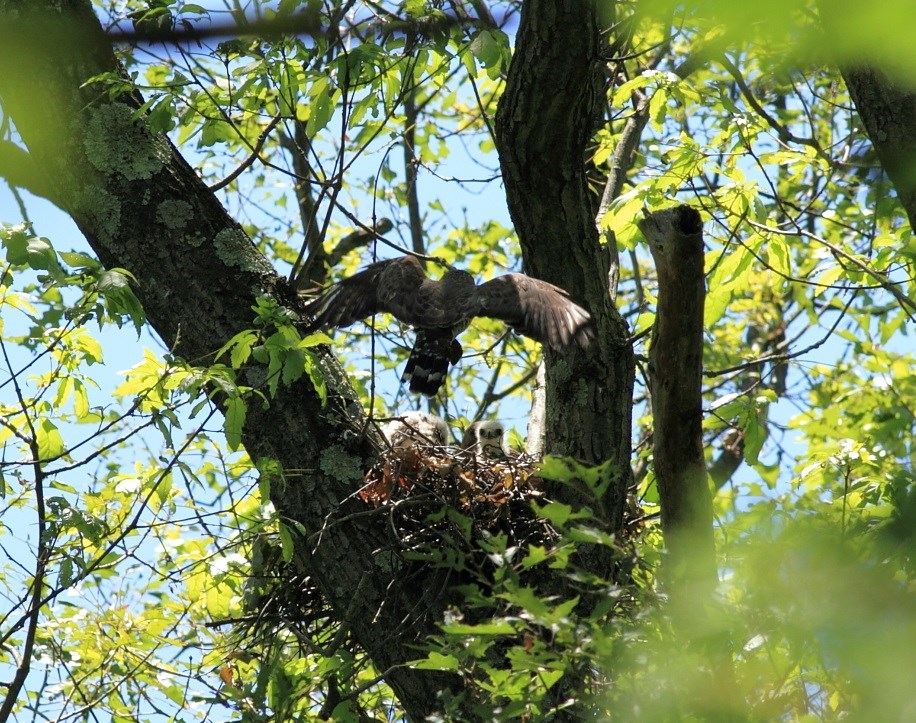Birds of Hawk Mountain
A Globally Important Bird Area
A huge array of species uses the Ridge as a yearly migratory corridor, including
broad-winged hawks, American kestrels, ruby-throated hummingbirds, eastern bluebirds, monarch butterflies, cerulean warblers, and more.

Habitat for Nesting
Hawk Mountain forests are directly connected to Central and South America by Neotropical bird migrants. The inventory refined our understanding of bird distributions on the Sanctuary, and pinpointed breeding and wintering habitats by species. The inventory confirmed that many declining Neotropical migrant birds, including scarlet tanagers and wood thrushes, are abundant nesting birds here. Seven of the 10 most common nesting species on the Sanctuary are forest-interior Neotropical migrants including our most common nesting bird, the ovenbird, a ground-nesting warbler. Recently, the cerulean warbler has returned as a nesting species. The Sanctuary also supports ruffed grouse with family groups encountered along the upper ridge woodlands through the summer.
Breeding Hawks
Hawks and owls also nest on Hawk Mountain. At least three pairs of broad-winged hawks nest here. Other species include sharp-shinned, Cooper’s hawk, and red-tailed hawks, great-horned, barred, and eastern screech owl.
Rest Stop on Migration
Hawk Mountain forests provide migration stopover habitat for more than 100 species of birds, including 16 raptors. The Kittatinny Ridge is a globally important flyway, and its forested slopes and lowland grasslands provide habitat to rest and feed, sometimes for up to several days. Some eastern migrants, such as black-throated green warblers, may concentrate in greater numbers along the Appalachian flyway than along the Atlantic coastal flyway.
Birds in Winter
Chickadees and downy woodpeckers are some of the common winter birds on the Sanctuary along with pileated woodpecker and tufted titmice. Kinglets join chickadee flocks as winter visitors. Currently, nearly 70 percent of our winter bird species concentrate in mixed coniferous-deciduous forest along streams in the lower-elevation forest near the River of Rocks and Little Schuylkill River. The Native Habitat Garden and bird feeders near the Visitor Center also attract wintering birds. Deciduous trees and snags provide birds with abundant cavities for night roosts, while coniferous trees provide food and thermal cover.